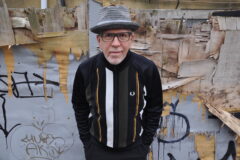Dominique Fils-Aimé’s music makes indoors feel like outdoors—capturing the fresh, natural, rejuvenating version of being in nature. The singer-songwriter sits cross-legged on a blue couch, a slouchy sweater casually slipped off her shoulder, revealing a tank top underneath. An array of plants has unintentionally arranged itself into a halo behind her head. Her hair is styled in neat knots that give her a young air.
But Dominique is wise. The Montreal native of Haitian descent has spent much of her time observing and exploring, inward and outward. She shares generously, often through her expressive hands, dark nails flashing under stacks of silver rings.
She likes working in trilogies. Her first three albums traversed Black music through specific genres: blues on Nameless (2018), jazz on Stay Tuned! (2019) and soul on Three Little Words (2021). Dominique is most associated with jazz, and 2023’s Our Roots Run Deep, which signaled the next triptych, earned her the Juno Award for vocal jazz album of the year—her second win in that category after Stay Tuned!.
Earlier this year she stepped outside her triplet tradition with Live at the Montreal International Jazz Festival, recorded June 29, 2024. The album captures a landmark performance—which, she says, wasn’t meant to be a live album, but the performance felt so special the decision came afterward.
This is not unusual for Dominique who—as much as she likes planning and mapping out ideas and concepts—moves on instinct and intuition. Visual markers like colors and keywords give her a framework, but within that space, she relies on energy. She paints her albums. And she’s constantly searching, trying, and growing. If there was a one-word descriptor for her, it would be “explorer.”
While Canadian and European audiences have already experienced her live performances, the U.S. will get its first live experiences of her when she embarks on a month-long U.S. tour of the States.
When we spoke in mid-June, she had just completed the recording of her fifth album, the middle installation of her second trilogy, and she was pretty jazzed about it—pun intended.
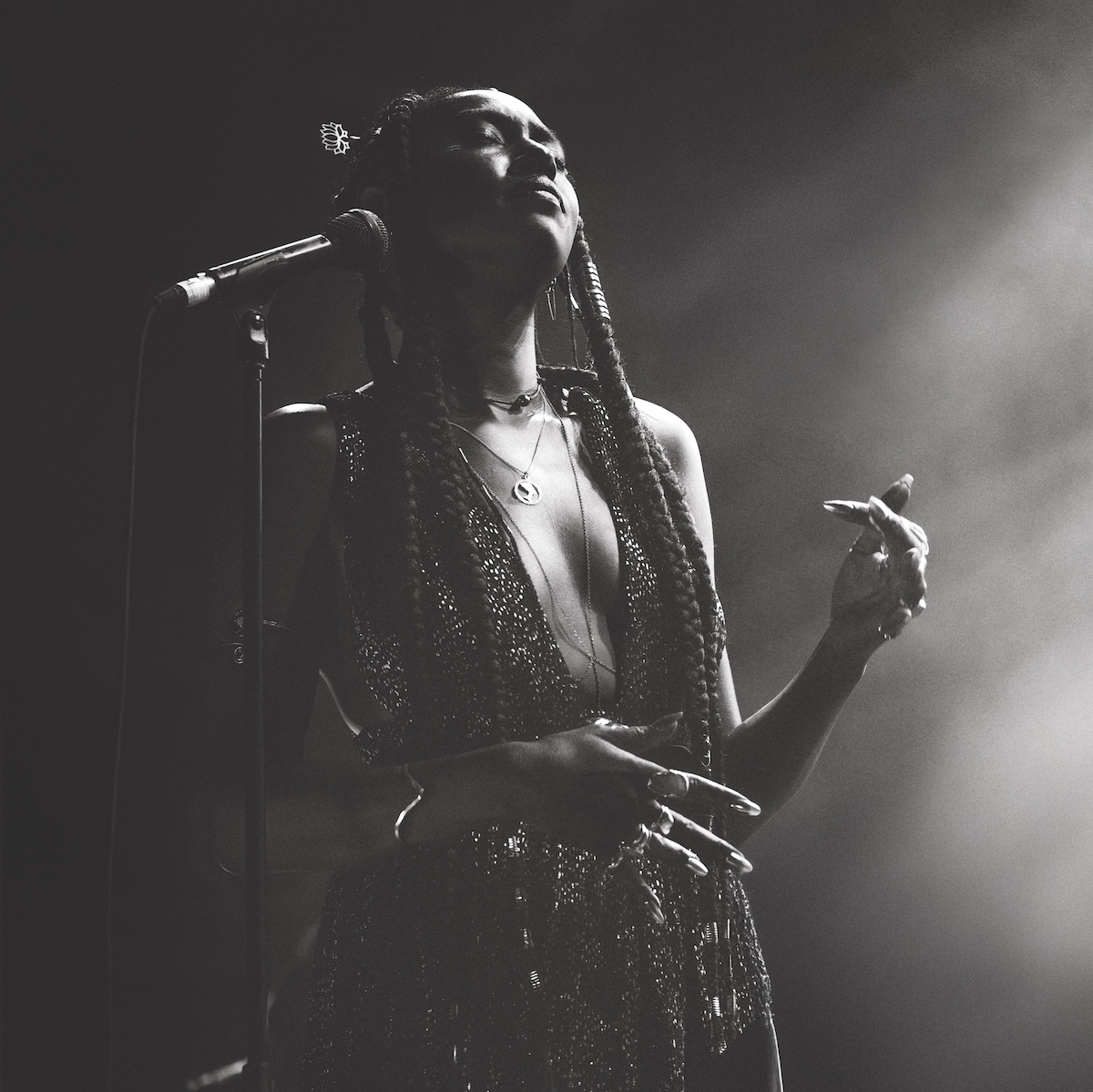

What can you tell us about the new album you’ve just finished?
It’s the second album of my second trilogy, and it’s a continuation. I’m trying to reconnect and explore the depth of personal freedom through creation.
What does that mean to you?
To me, it means reconnecting to the inner child that creates without any limitations or without having the outside world. This is how I started, then I started putting some map in my head of where I wanted to go, what I wanted to explore, which area, and perhaps at some point letting go of that part allows me to be even freer. I was free, but within a context I had established before. Now I just want to seek freedom where it is less the cerebral aspect and more in the feeling and intuition, letting it guide me from that instinctual place.
How did you develop your musical style?
It developed itself through the joy of creating and discovering myself and my voice and exploring sounds. It began because I was working for quite a long time in another field completely. I was working in psychological support for employees and with autistic children. When I burnt out, I started making music as a form of therapy for myself. I would spend hours at night discovering the concept of harmonies and piling up many voices. There was something about the sound, letting out random notes or random words and harmonizing that felt so good. I carried on exploring that avenue. It detached me from what is being done out there. How are other people singing? How is the world evolving artistically? It was really about my own little bubble. I was completely lost in my own world. If I would do a cover, I would do it my own way. I feel like exploring from a place where you’re not judging yourself and you’re just enjoying the process, will allow the discovery of who you are. When you enjoy art the same way you did as a kid, when there is no right or wrong, there’s no, “I’m good enough. I’m not good enough,” there’s just pleasant. I listen to some of these tracks now and I’m like, “Oh Lord, thank God I wasn’t judging myself, because I’m judging a little now.” But it felt good, and that’s all that mattered. It was following the joy of creating and the need for emotions to come out and be put somewhere in the world in some shape or form. Turns out frequencies were the best shape that it could take for me and my healing process.
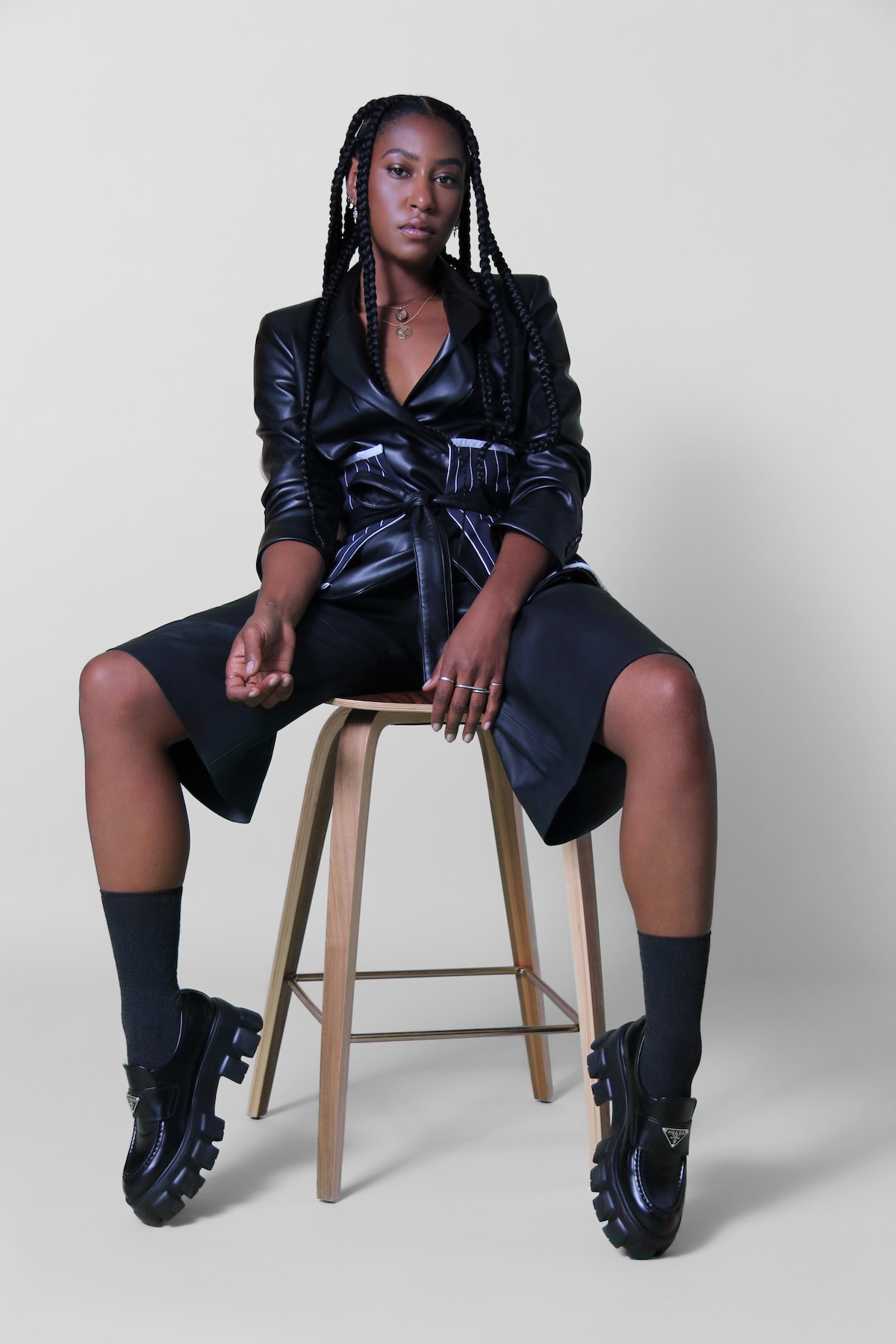

What brought you to jazz?
Freedom. When I understood jazz is not about the way people academized it or made it into academia. The music was there before the books. When people are reproducing sounds in a very academic way, like unlearning the structure of jazz in a way that is cerebral, I feel like this is a big misconception. Jazz was about the quest for freedom, the desire to break out of a specific way of doing things. This is the legacy and the type of jazz I received. This is what I want to protect and cater to as my definition of jazz and as the type of art I want to make. That’s what jazz is. It’s the freedom of transcending every box and doing what is authentic to you and what is part of your quest to create as freely as possible with what you are and who you are.
Did playing the Montreal International Jazz Festival, as a jazz event in your hometown, make you feel more at ease?
I felt at home for sure. This festival has been supporting me since the very beginning, when no one would book us or give us any mind. I have profound gratitude for the whole team behind it, and the public who follows the festival through years, starting off in the tiniest room, and then having every festival be a bigger room and more people growing with us. It helped me bloom into the person I am on stage today. To be on that stage and know there’s so many people who worked so hard for me to get on there with all these musicians and all these backing vocalists, it’s unbelievable. I never would have thought that doing what I love and trusting my gut to do things differently could lead us to these places. It was definitely a magical and touching moment.
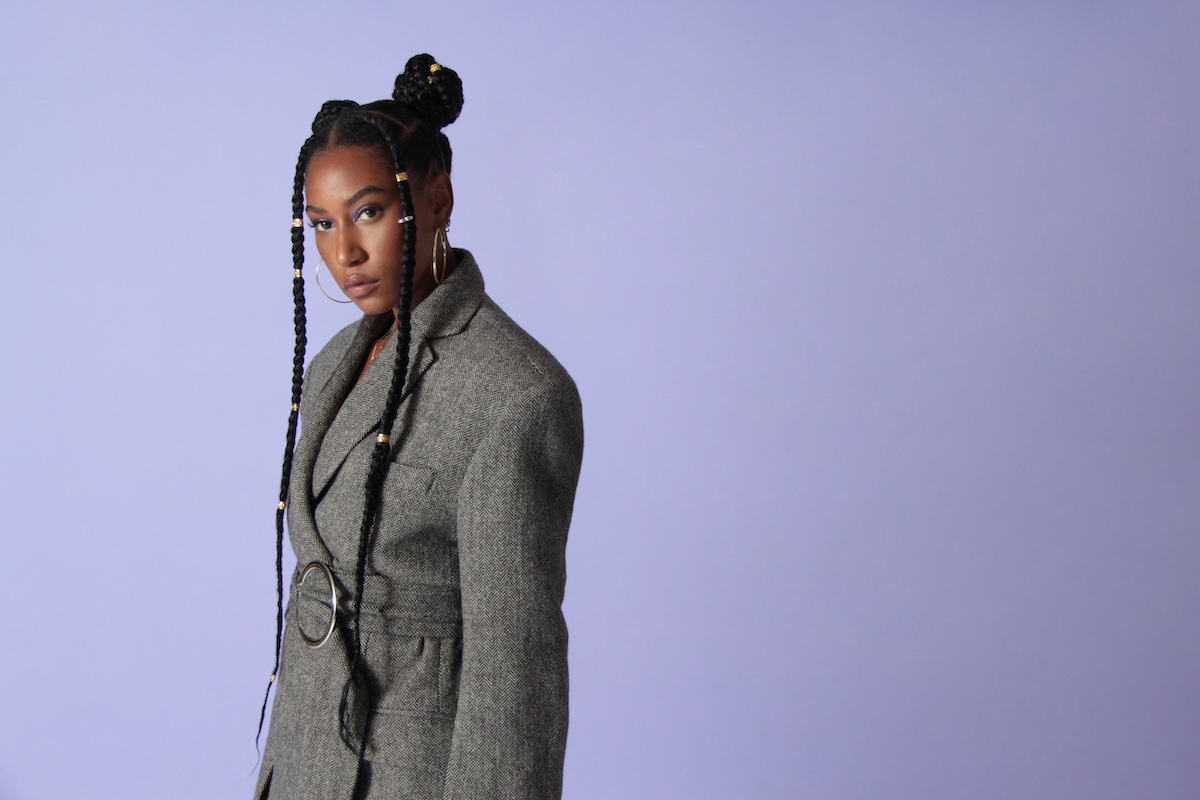

The live album feels incredibly intimate, almost like there’s no barrier between you and the listener. How did you achieve that?
I felt a comfort there. There was so much love. I didn’t know it would be an album. They were recording it anyway. We record every show. We have hundreds of shows recorded. Especially big ones like that, we make sure we have it, at least for the memory of it. Vocally, there’s a lot of things that did not go as I usually would. I didn’t hear myself as well as I would have liked. There were all these technical elements. But they did not matter, because of the feeling. That’s why I was able to welcome that idea, although there was a little perfectionist voice behind being like, “It was not your ultimate performance, vocally. But emotionally, you were there 1000%.” And the people were there with us. There was an energy, a chemistry going on. It felt a fluid space between the musicians. Everyone on stage and everyone in the crowd, there was a connection, something special happening. I’m happy we kept it as an album. It needed to happen.
Are you hoping to capture the spirit of that Jazz Festival performance on your upcoming tour?
It’s a little different because the new album, the fourth album, the first of the second trilogy, Our Roots Run Deep, is different. It’s one single story. The songs are synced, one into the other, and they’re also mingled with little interludes that are poems that help me ground the people into which stage of the journey we are. It’s meant to be more of an immersive, meditative experience where I ask people to sink into their seats. There’s two or three times where people have space for applause. Your presence is already the loudest applause an artist can wish for. I want them to close their eyes and come on a journey with us throughout the show, which is easier to do in smaller spaces. Jazz Fest was a huge show, but I enjoy the intimacy of taking people on a journey on a more peaceful little river, on a little boat, where we’re going from point A to point B together. Take this moment to let go of everything outside this room and be in the moment with us.
What draws you to the idea of creating albums as trilogies?
Being in the studio is my favorite part of the process. Creating, in general, is my favorite part. I think without realizing it, I was finding a way to be in creation as often as possible, versus people who might have a longer cycle between albums. I enjoy the number three. There’s something about it that feels complete and that gives me more room to create a story through longevity and a deeper connection with people who are willing to embark on that journey with me. There was perhaps a form of wanting to go against that current of everything needing to be fast. When I started the trilogy, people were telling me, “You can’t do that. You have to do singles. You have to, you have to, you have to.” Being told that I have to do something and to go at a pace when my inner pace feels slower, it was an act of rebellion, in a way. Choosing the pace I want to go at, that feels right to me, even if it does not connect with people as fast as other pieces, artistically, I know I’m being authentic to myself and genuine with what feels right. As an artist, that feels amazing.
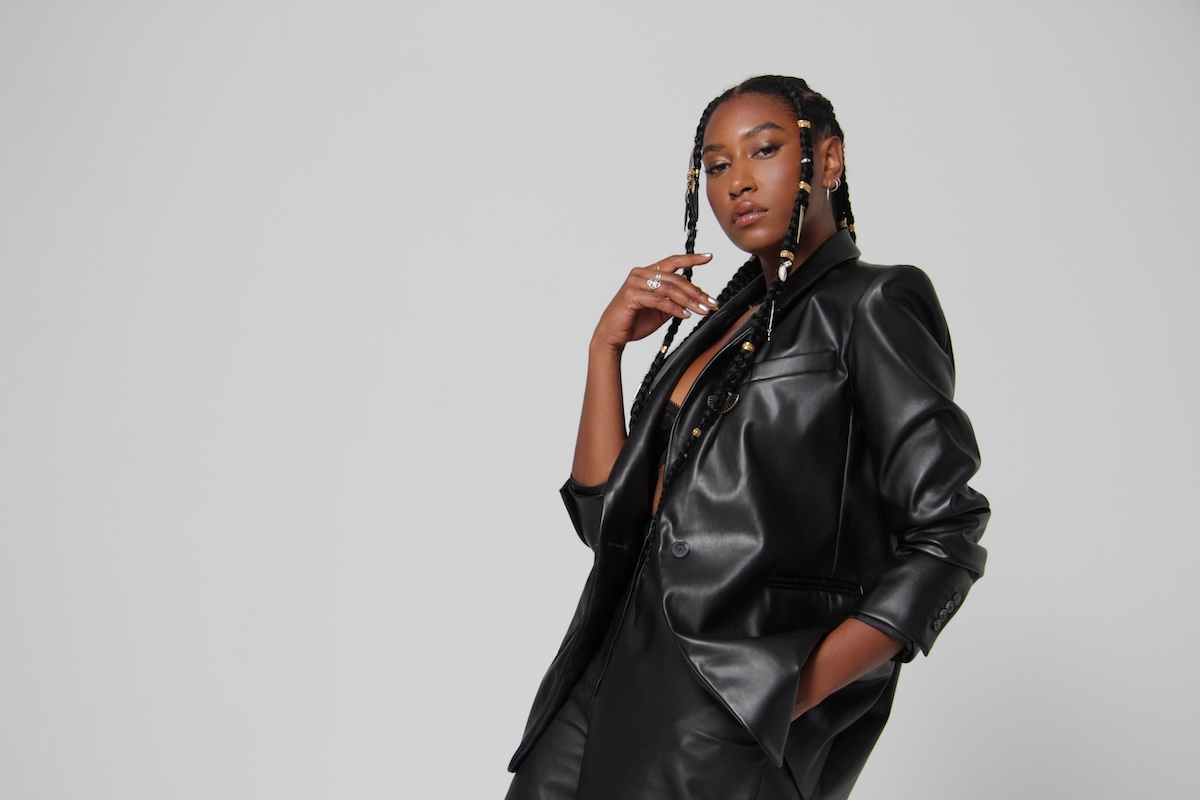

Do the albums within a trilogy ever overlap?
The first trilogy, I had really taken care to write down the areas I wanted to play in for each album, making sure the creative process belonged to every album. This time, I have way less information about what the albums are going to be. It’s more about what is the color, what is the energy, what is the keyword, and then whatever comes at that moment. For the first time, I have a song I made on this album that I believe I’m going to put in the next one, because I don’t want to rush it. I’d rather take the time to complete it properly than rush it and throw it in the album. It’s the first time something overlaps. Usually every album is a stamp of who I am in that period of time and the best I can do with who I am then, wanting to share that evolution and that journey with people as well.
What inspired you to move from painting your albums first to creating the artwork alongside the music?
I love that world building. I had painted each of them, and now I’m in the process of painting the one that goes with this album. I just started the drawings. It feels nice to be able to have the processes be parallel, instead of one after the other.
Had you decided on the colors for the album ahead of time?
I already knew. The first three albums cycle was the primary colors. I believe there’s a lot of cycles we go through, and music is a nice way to represent that. The first album of this trilogy was the mix of the last and the first album of the one before, which created green. And now in that process where I’m exploring the next evolution of myself and my artistry, it was between the first and the second of the first trilogy, which is blue and red, so I already knew it would be purple. I also know the next one is going to be the mix of red and yellow, which is orange.
Do you feel like each album reveals more of yourself, becoming more vulnerable over time?
I definitely am. It’s a strange and very exciting process. If we look at chakras as an energetic skeleton, you get certain information, or you understand certain things, but they have to sink in before you’re able to speak them. They sink in your heart, where your heart falls in love with the concept, and then your gut feeling becomes the intuition that leads you all the way until you digest it fully and walk every step of your life in that process. It feels like these albums have helped me and allowed me to let these beliefs sink in deeper into myself, so that I may walk the talk and that is, I believe, one of the quests that we have as humans: the idea of wanting to be seen or to feel seen.
But can you be seen if you’re not showing yourself really? The dichotomy of that notion I feel pulls people inside. Every one of my steps is coming closer to showing who I truly am, what I believe in, and letting go of whatever judgment comes with it. It doesn’t belong to me. I accept that people are allowed to think what they want. They’re allowed to call me delusional when I’m being positive, or call me a hippie because I believe love is the ultimate cure for the world. Welcoming these things and letting go of the fear and the fight that made me want to hide before is extremely freeing. I hope that it can leak into my music as I create more from that place, and as I live more from that place of comfort with who I am.
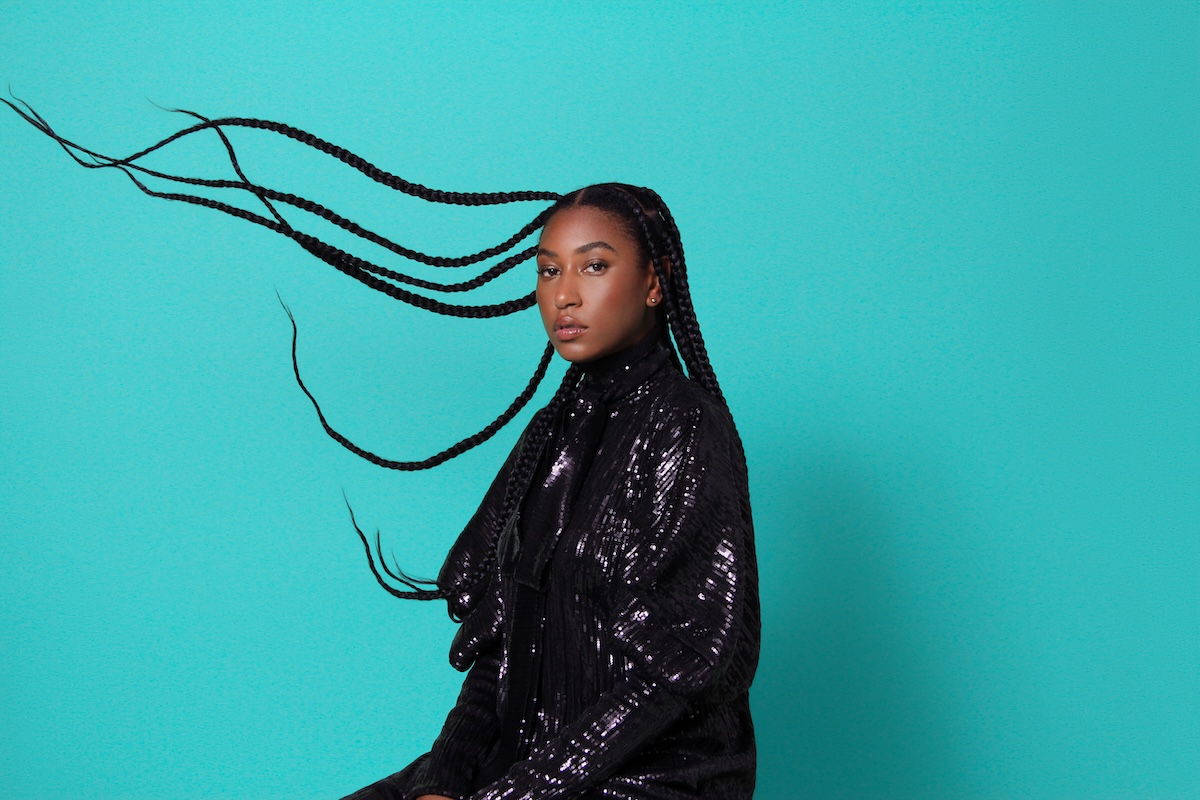

Does singing in French make it easier or harder to express your true self?
It’s as if it’s another part of me. You know how they say you have two parts of the brain? Left and right, even when you look at it, they’re literally separate. They have different priorities, different interests. You have the left side that is more about here today in the real, physical world and the emotions and the need to see me as a person. Then you have the right side that is more connected to everything around us. The energies in things and colors and shapes. Usually for me, art is about tapping into that more connected place. Because I wish to create things that will connect with people, and connect people between themselves and with their emotions. There’s a universal aspect on that side of the brain, and it’s as if singing in French is the other part of my brain, the right brain. This part is more about my personal experiences, my very intimate, personal emotions. But also, there is a desire or pressure to be somewhat more poetic or precise with the word, because the French language can be a little more picky on the right word. That’s a form of pressure I didn’t want in my art. That’s why I stayed away from it for so long. But then I realized I need to also make sure that whenever a song comes in another language, I need to follow that intuition too, because that means something in me needs to express something from that place. Allowing it to come as it comes, turns out that eventually some of it came out in French, so I welcomed it, and discovered a new part of me.
Do you find your goals keep evolving?
I think some goals evolve, but the ultimate goal will remain always the same—then again, you never know. To leave this place and leave something behind me that allows people to feel loved and reminded that there’s people who care and want to see this world evolve into a better place, that I truly believe we can do. We need to all put our little droplet of hope in the bucket. If humanity is a building where we all are putting brick-by-brick, I want to make sure I leave a brick behind me that is filled with love and hope and a frequency that can encourage healing and empathy.


